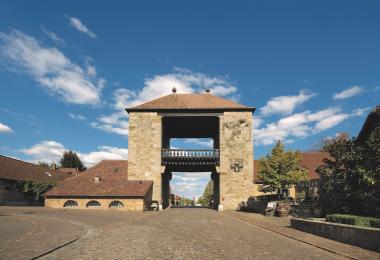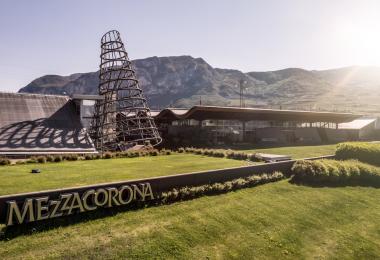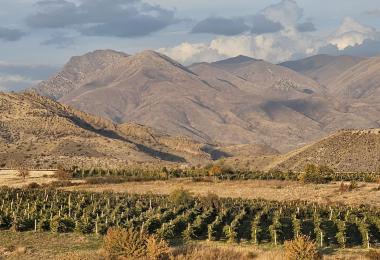This year marks the tenth edition of the World Bulk Wine Exhibition (WBWE). Back in 2009, it seemed strange to devote a whole fair to bulk wine, the anonymous wine that’s bought by brokers and blended into other wines, or sold under private labels.
Today, however, nobody doubts the power of bulk wine. Not only is the sector responsible for generating a full 40% of global exports, but it accounts for more than €3,000m ($3,477m) in value. There’s also no doubt that quality has risen exponentially over the past decade – thanks, in part to the International Bulk Wine Competition. Buyers have changed as well, because the WBWE allowed small and medium sized players to enter the market, both on the production and the buying side.
It’s been nothing short of a revolution.
How things have changed
Held in Amsterdam at the end of each November, the WBWE is the meeting point for the world’s professionals – more than 200 exhibitors representing 22 countries will be there. Visitors can not only taste their way through the year’s vintage, but can also learn more about what’s happening in the international market.
“We have grown so much over the past ten years, that we would need several issues of this magazine in order to be able to explain them all in depth,” says Otilia Romero de Condés, CEO of the WBWE, adding that it has “not been an easy road”.
The goal back in 2009 was not just to promote bulk wine, but also to shine light on the people behind it and the benefits bulk wine can offer to its region of origin. “The preservation of rural areas, the continued existence of many businesses within the wine industry, and the improvement of the environment,” says Romero de Condés, ticking off the benefits. “It has been complex and it has required the utmost of ourselves – a hard job carried out by an international team that has worked tirelessly from the very beginning.” But, she says, “time has proven us right and we are delighted, since the winner is the bulk wine industry itself.”
What is bulk wine?
At its most simple, bulk wine is the name given to wine shipped in containers such as Flexitanks, and bottled at its destination. The way a wine is transported says nothing about its quality – some very high quality wines are shipped in bulk from the New World, for example, to save on shipping costs and lower the environmental impact.
In these cases, the wine is destined to end up at bottling lines in Germany and the UK, where it will go into specific, well-known brands. In other words, calling it ‘bulk wine’ just tells you how the wine was transported.
Another type of bulk wine is overflow wine from wineries. Say there’s been a bumper harvest and a winery can’t use all of the wine it’s produced – it will then sell its excess, but it may want to do it anonymously, to ensure that it protects its core brands. This excess wine may be very high quality indeed.
Then there is the wine produced by co-operatives and wineries who prefer to simply produce the wine and sell it. In this case, other people do the work of branding and distribution.
Ten years ago, it was mainly brokers and large producers who traded in bulk wine; big wineries would buy bulk wine as a cost-effective way to increase or extend their range.
Today, however, bulk wines are attractive to a wide range of buyers, particularly in retail and hospitality, because they can use bulk wine to create their own brands, known as ‘private label’ wines. Many supermarkets, particularly in countries such as the UK and Holland, now rely heavily on the ability to create their own private labels (‘own brands’), because it gives them complete control over their supply chain and pricing.
Indeed, the bulk wine market is one of the most efficient sectors of the wine industry, because it’s where demand meets supply – if one market has a sudden thirst for crisp white styles, buyers will be able to supply that demand by finding the base wines they need at the WBWE. If another market has produced too much Cabernet Sauvignon, they can find a buyer at the WBWE.
What’s on offer has changed as well – although the major international varietals such as Cabernet Sauvignon, Chardonnay and Pinot Grigio remain the staples of the market, the bulk wine market now offers organic wines, sustainable wines, unusual blends, and even rare varieties. Indeed, if you want to see at a glance how the world’s wine industry is evolving, the best way to do it is by walking the exhibition floor at the WBWE and tasting the wines – around 80% of the world’s bulk wine is on offer, a huge percentage of the overall global trade.
Perhaps the biggest shift in the market is the emphasis on quality. The days when wineries could offload poor quality wines onto the market are long gone. Today, it’s all about value for money and drinkability, which is why the WBWE instituted a Bulk Wine International Competition, to identify and celebrate the best bulk wine. It’s the only competition of its kind in the world.
Depth of knowledge
The WBWE is also the place to come for debate, dialogue and to learn more about trends, says Romero de Condés, thanks to the many talks and seminars on offer, which will be of interest not only to buyers, but to journalists, wine lovers and trend hunters. “We will once again pay close attention to private labels and how brands are created,” she says, “as well as to the trends that are successful in the new importing markets.” This year, for example, visitors can attend an overview of the global wine market in 2017, presented by Jean Marie Aurand, director general of the International Organisation of Vine and Wine (the OIV). There is also a presentation on the trends in Southeast Asia, an overview of market trends in Scandinavia, and a roundtable on vineyards and climate change.
Another standout opportunity is the Art of Blending Wine master class, “which we launched last year and that is the only seminar worldwide devoted to the art of blending,” says Romero de Condés.
Participants will be taken through the theory and practice of blending, including how to correct undesirable traits like too much sweetness. The master class will be led by “professionals from all over the world, focused on sharing their knowledge.”
The aim of all of these activities is to attract professionals and people in the industry who enjoy debate, dialogue and learning opportunities. “These two days of expanding business networks are enriching for everyone interested in the wine industry, whatever their occupation might be,” says Romero de Condés.
There will also be many discussions on bulk wine transport itself, a critical issue for the wine sector. “It is an exciting and complex topic that we will summarize as we always do – by upholding and promoting the quality of the wine,” says Romero de Condés. “Additionally, it is exciting and rewarding for the survival of the entire sector – and of rural areas such as Castilla La-Mancha – to be able to know all the available business options.”
Business opportunities
Of course, the main activity of the fair is the chance to trade. “With regards to the exhibitors, we can say that all the world’s producing areas will once again be represented with all that this implies,” says Romero de Condés, adding the visitors will be able to taste across a wide range of categories and price segments, which is something that “only this fair can offer and that allows international wine purchasers the chance to taste the world’s entire harvest in just two days, and in a single place.”
As to the future, Romero de Condés says the next step is to expand into Asia. “Our immediate objective is to encourage a greater market for bulk wine in Southeast Asia, where purchases can and must be substantially improved, in China as well as in Japan, South Korea, Thailand, Malaysia, Indonesia and Hong Kong. For that purpose, we expect to kick off an international gathering for bulk wine buyers and sellers in China in June 2019.”
Until then, the only place to be for bulk wine is Amsterdam, on the 26th and 27th November 2018, where the world’s producers and buyers will come together.
Other activities:
The Bulk Wine Club
The Bulk Wine Club is a club for the gathering of information and business concerning bulk wine, as well as an information forum addressed to our members. It will allow our members to have direct, real time access to what is happening in our sector worldwide: sales data, prices, trade flow and trends.
The Vine Research & Innovation
This is a specialized area that promotes innovation and research into ways to use and maximize the byproducts of viticulture and winemaking.
International Bulk Wine Competition
The world’s only competition dedicated to defining, promoting and rewarding high quality bulk wine.
The Art of Blending Wine Master class
Learn the blending techniques of the masters, including how to work with red, white and sparkling and elements such as wood.
The World Bulk Wine Exhibition
26 and 27 November 2018
Amsterdam RAI
Amsterdam, Netherlands
www.worldbulkwine.com








